
The Canadian Premier League is back! This weekend saw another heavyweight clash between Cavalry and Forge, and a surprise team take top spot in the table. Here is our (ongoing) tactical review of the Canadian Premier League’s second round of fixtures.
FC EDMONTON 1-1 YORK UNITED


York United kicked off the weekend for the second week in a row, this time facing off against a well structured, defensively resilient FC Edmonton. Both teams set up in the same shapes from the week before, with Edmonton in a defensively sound 5-4-1, and York in a free flowing 4-2-3-1.
For the second week in a row, FC Edmonton achieved success through winning the vast majority of their 1v1 duels, particularly in the wide areas where wing-backs Wesley Timoteo and Marcus Simmons were exceptional in timing their tackles and stopping wide penetration. With the wing-backs dominating defensively and Koch’s compact structures holding firm, York were forced to seek space in front of the defensive line. Unfortunately for Edmonton, Nash’s men were fruitful in finding that space in between the lines through the use of attacking rotations between Isaiah Johnston and Osaze De Rosario. The problem for York – even if they were able to receive these passes in between the lines, they couldn’t find a way past Edmonton’s three centre-backs as they swarmed around the ball. They were forced into working the wide areas instead, where both Chrisnovic N’Sa and Diyaeddine Abzi were excellent in joining attacks and delivering crosses into the box. Edmonton dealt with most of these crosses expertly well, and were helped by the Thor like strength in Abzi’s foot that constantly resulted in overhit passes.
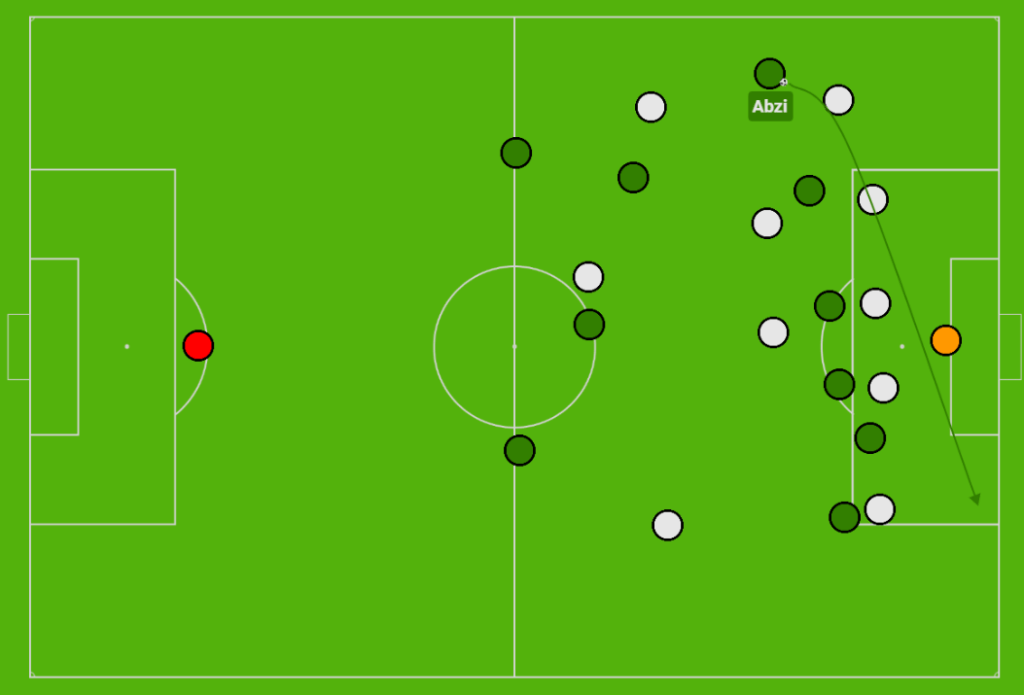
Nevertheless, with Abzi and Johnston back in the team from the start, Martin Nash’s team showcased a clear attacking identity for the first time this season. Their rotations between Johnston and De Rosario worked well to create space in between the lines, and they prioritized attacks down the wide areas where Tobias Warschewski often failed to follow Abzi into the final third – leaving Timoteo up against two players.

With this clear identity in place, York United were able to continue using long passes to their advantage, particularly down the left-half-spaces where Thompson and Verhoeven clipped balls over the top for the likes of Abzi and Minatel. In other moments, Wilson and Zator were more wasteful in lumping the ball forward, and both completed under 40% of their long passing attempts. But more positively for the two right sided players, they were crucial to setting the tempo of the match and keeping York in control.
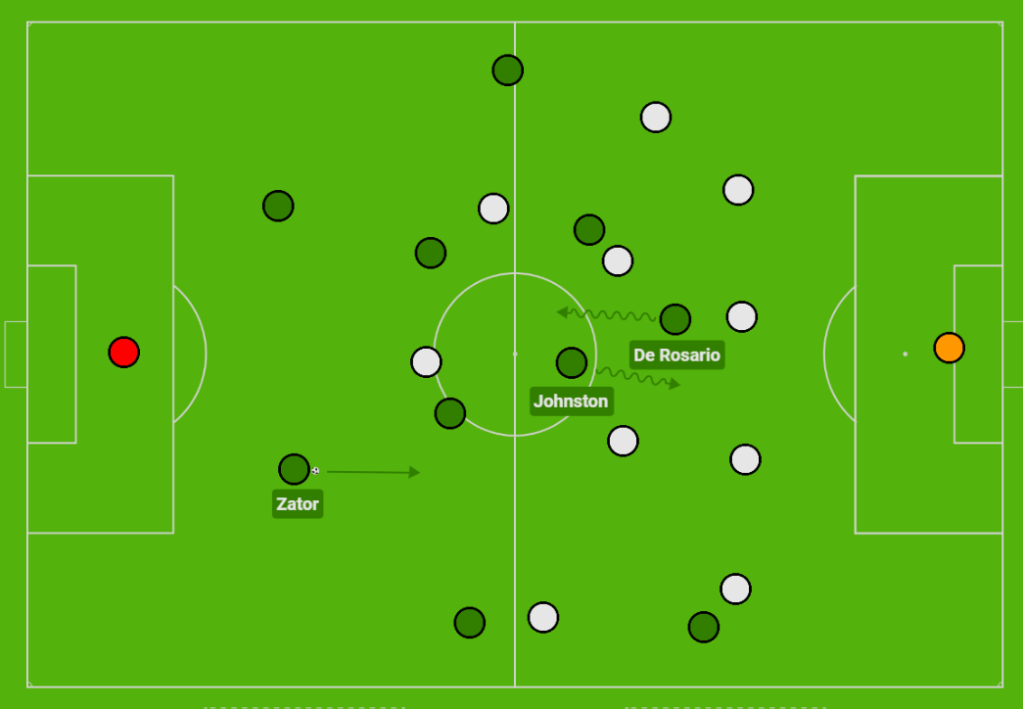
Zator took his moments to carry the ball out from the back, and handled circulation stages well with Roger Thompson by his side. The two centre-halves correctly took their moments to progress into the wide areas to the likes of N’Sa and Minatel, as opposed to centrally where Johnston and De Rosario roamed. With Verhoeven constantly scanning his surroundings and Wilson’s calmness on the ball, York were able to use their 2-4-4 attacking shape to dominate the lion’s share of possession (63%).
Going the other way, York were solid at the back, and difficult to break down for the majority of the game. Despite committing four fouls, Wilson handled transitional moments well alongside Verhoeven, covering the wide areas as Abzi and N’Sa ventured forward. Niko Giantsopolous also handled transitional moments well in behind York’s back-line and was often used as an outlet for recycling play and restarting build-ups. Again, Abzi’s inclusion also allowed for greater solidity, as he perfectly matched up against Tobias Warschewski’s intensity and physicality. With a solid foundation in their 4-4-2 high press, Edmonton often chose to go long instead of playing out from the back, where Thompson and Zator dominated Julian Ulbricht.
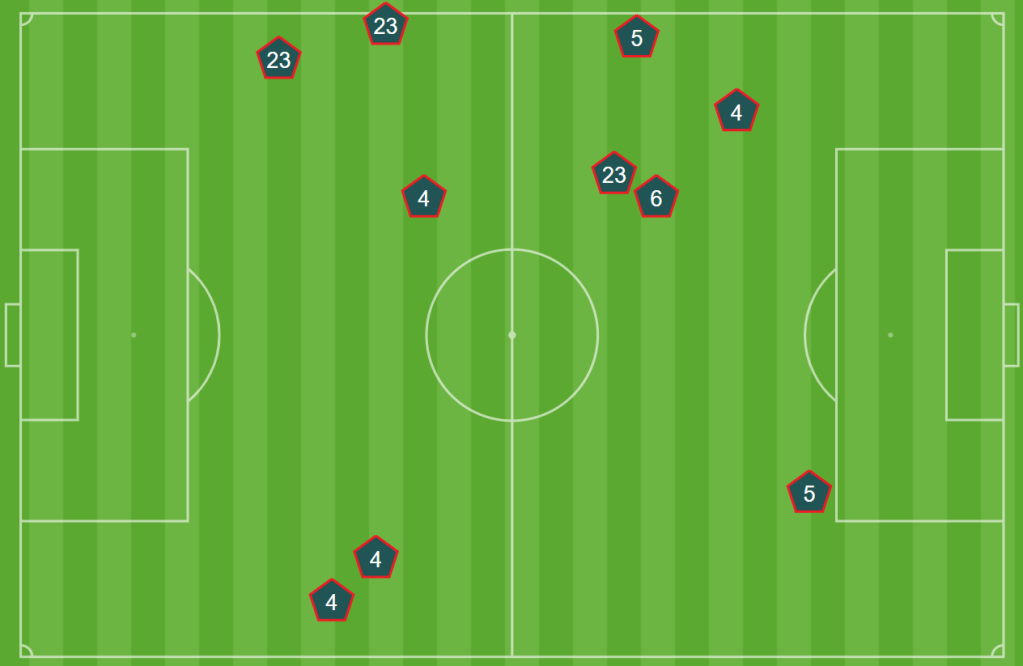
The only major defensive hole that needs to be sorted out by Nash is their poor defensive discipline. Wilson made a horror tackle on Edmonton captain Shamit Shome early in the match, and four others received yellow cards for unnecessary challenges. In the opening match against Halifax, the Nine Stripes conceded a penalty kick, received a red card, and couldn’t handle any injection of pace without bringing the player down or letting him fly. This is something that needs to be sorted out, as eventually poor discipline will catch up to Martin Nash’s team, and they will lose their key figureheads.
Edmonton on the other hand can be praised for their resilience in grinding out a late draw for the second week in a row. They dominated both aerial and ground duels (winning 61 total to York’s 45). The connections between Warschewski, Ulbricht and Gonzalez showed promise once again in glimpses, but with Ulbricht still lacking that cutting edge up front, the Eddies couldn’t generate clear-cut chances. They had some positive moments in connecting short passes in wide overloads as Bitar and Shome played a more adventurous role in comparison to Matchday 1, and Wesley Timoteo ventured forward down the right to link up with Warschewski and push the German closer to goal. While they accumulated just 37% of the possession, Luke Singh had a solid performance for his team and often kickstarted their attacking moves. He was at times too quick to go long without reason, but other times played beautiful passes down the line to connect with Azriel Gonzalez.
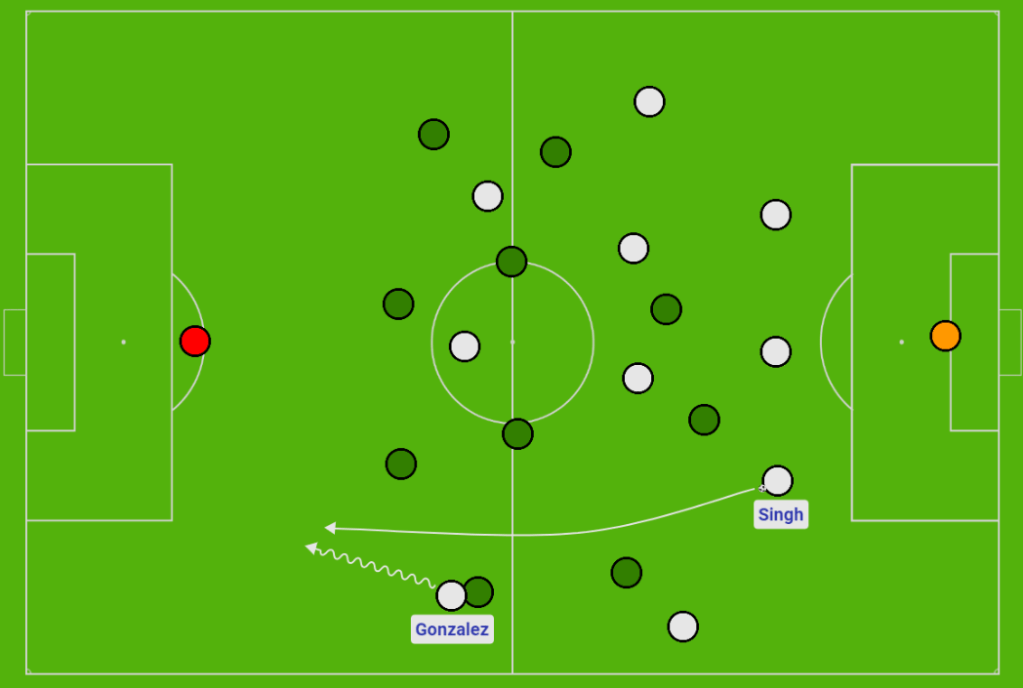
Importantly, Alan Koch has achieved a remarkably steady balance at the back, with Singh, Higgins and Loughrey wonderfully complimenting one another’s skillsets. Singh is a solid carrier and wants to be progressive with his passing, while Loughrey is much more proactive defensively in stepping out of line and following the striker’s movement in deep. Higgins can then clean up the mess in behind, or vice versa as Loughrey saves the day right at the death instead. All over the pitch, Edmonton have the balance to achieve success and score goals. But it’s almost as though they’re resisting the temptation to truly show their quality in the final third and be their most adventurous, risk-taking selves. It’s taken a goal from the other team for them to kick into high gear two matches in a row now, with the Eddies scoring just minutes after De Rosario’s opener.
It is however worth noting that Alan Koch has a clear sense of direction as to how to change matches late on and provide more attacking thrust. He succeeded with his substitutions for the second week in a row, with Terique Mohammed getting up with the play to deliver the cross moments before the ball fell to CJ Smith, and then Mastanbal Kacher for the finish. Three substitutes combining on the equalizing goal demonstrates Koch’s understanding of his team and how to change the match to benefit the outcome – even if the decision to take Tobias Warschewski was a strange one. But in the end the spoils were shared – a fit ending to a fantastic match.
ATLETICO OTTAWA 1-0 HALIFAX WANDERERS


Atletico Ottawa have been the most intriguing team to watch at the start of this season, somehow achieving the best balance in the most lopsided shape. Carlos Gonzalez’s team had another valiant performance on Matchday 2, securing their second win of the season to climb into first place. Halifax meanwhile dominated the possession (57%), but couldn’t find a way past Nathan Ingham in goal, not to mention their wayward attempts from range.

For the second week in a row, Ottleti operated with fluctuating shapes between the different phases of the game. Their defensive structures held firm in a 4-4-2 shape, with Miguel Acosta seamlessly entering the frame to hold down the right-hand-side in the absence of Drew Beckie. In attack, they shifted into a lopsided 3-5-2, where Zach Verhoven sought space in the half-spaces and Maxim Tissot galloped up the left wing. Gonzalez’s team targeted passes into the path of Malcom Shaw to chase down in the half-spaces, with the centre-forward using his speed and strength to best Eriks Santos on the day. In turn, this allowed Ballou Tabla to drift into central spaces at the correct moments, where the two Atleti attackers combined brilliantly in the final third.
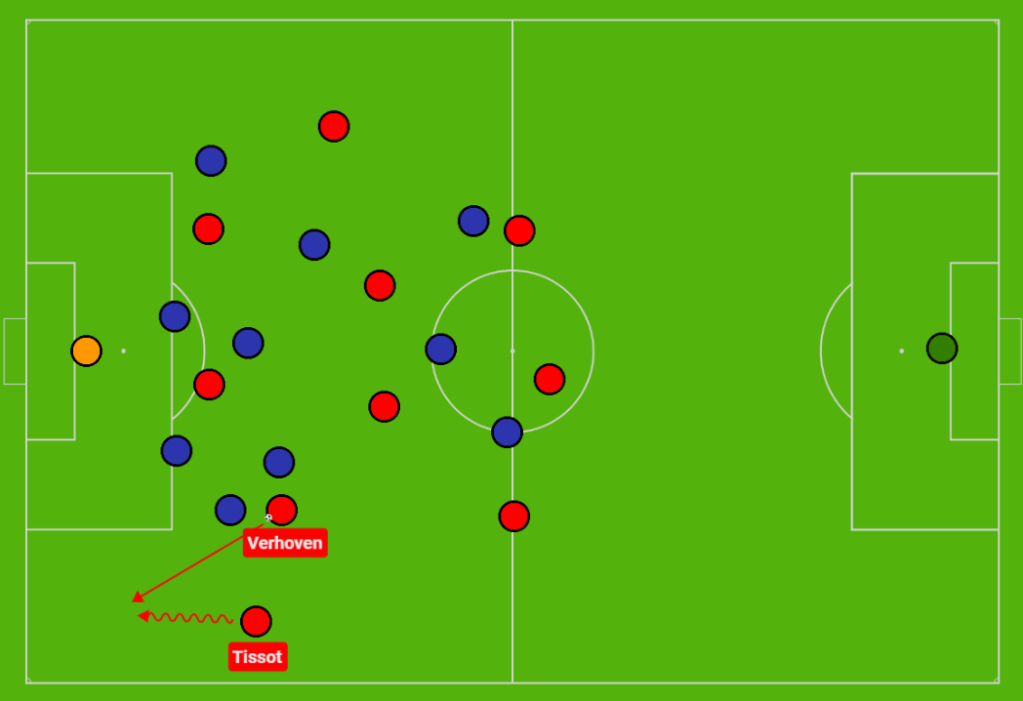
The combinations down the other side were also well constructed, with Tissot constantly overlapping Verhoven and delivering crosses toward the back-post for Shaw. Unfortunately for Atletico, while this attacking approach aided their endeavors, it also took away from the potential for the team to utilize Shaw’s aerial strength in central areas. Bassett and McKendry put up valiant performances on the day and kept the game ticking with their coolness under pressure. But neither took moments to carry the ball forward, and Halifax’s midfield overload limited Atletico’s ability to advance into those spaces. Gonzalez recognized Shaw’s prowess on the day in comparison to last week’s penalty kick scorer – Brian Wright – and finally found fluidity with Shaw operating centrally and Miguel Acosta exploding down the right half-spaces to carry forward.
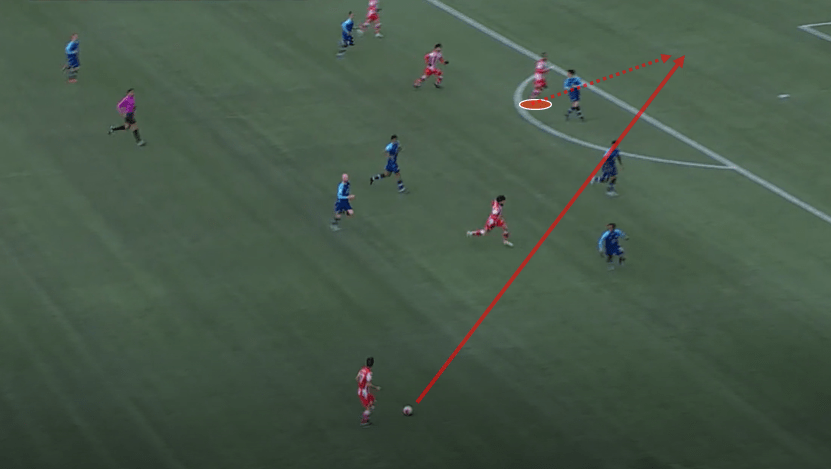
This combination led to the opening goal of the game, another 81st minute go ahead goal. Mateo Restrepo had an excellent game in winning the vast majority of his aerial duels, but Shaw’s blindside positioning consolidated by the precision on the pass meant the centre-back didn’t stand a chance on this occasion.
From a tactical perspective, Atletico continued to intrigue the hearts and minds of their supporters (and myself), adapting their defensive structure right at the front end of the pitch. On goal kicks, Ollie Bassett joined the first line of pressure, whilst Ben McKendry held down the second line alongside the two wide men.
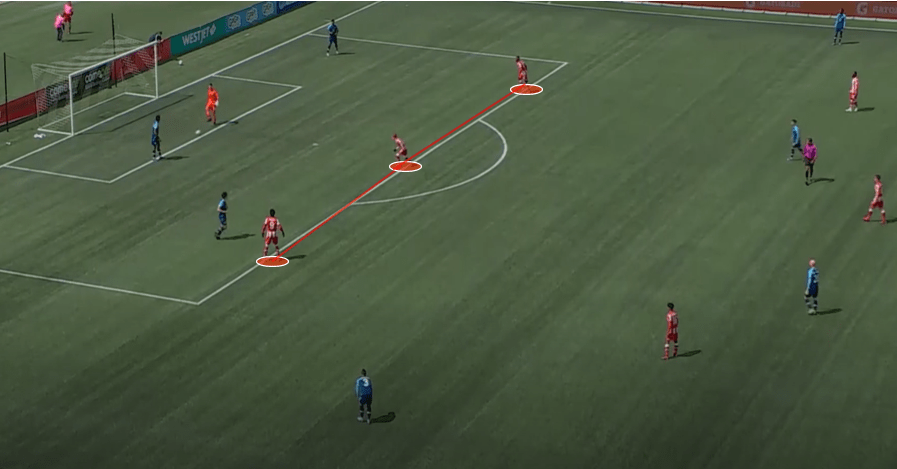
This gave their high press a 4-3-3 shape, and forced Halifax into long passes out from the back. Halifax broke the press on one occasion through using short, one-touch combinations and Oxner’s precision pass straight through the middle to Rampersad. But every other time, Ottleti were successful in forcing errors.
In their 4-4-2 mid to low block, Atletico continued their defensive solidity. MacDonald Niba consistently stepped out of line to handle runs in deep from either Cory Bent or Joao Morelli, as Diego Espejo excellently swept in behind. Speaking of sweeping, Nathan Ingham played a crucial role in behind the back-four, at one time even clearing the ball away from a Santos clipped pass with his noggin. With their sound foundations in place and a solid midfield two sitting in front of the back-line, Halifax couldn’t find a way past Ottleti, and hit hopeful shots from distance instead.
From a Halifax perspective, they may have lost the match, but they can still take away many positives from their performance. Joao Morelli found space to roam wherever he pleased as the false nine in the team, as Bent and Salter narrowed the pitch. This in turn pushed Fernandez and Tabi down the wing. Unfortunately for HFX, Atletico excellently handled the wide areas, and limited Hart’s team to just 11 crosses – only 2 of which found teammates. In truth, Halifax failed to generate many clear-cut chances of note, utilizing shots from range – which they were intelligent in creating for Morelli, but unintelligent in taking on from so far out. Pierre Lamothe frequently dropped to the left of the back-four, with Morelli seeking space in central areas and Gagnon-Laparé pulling the strings from deep.
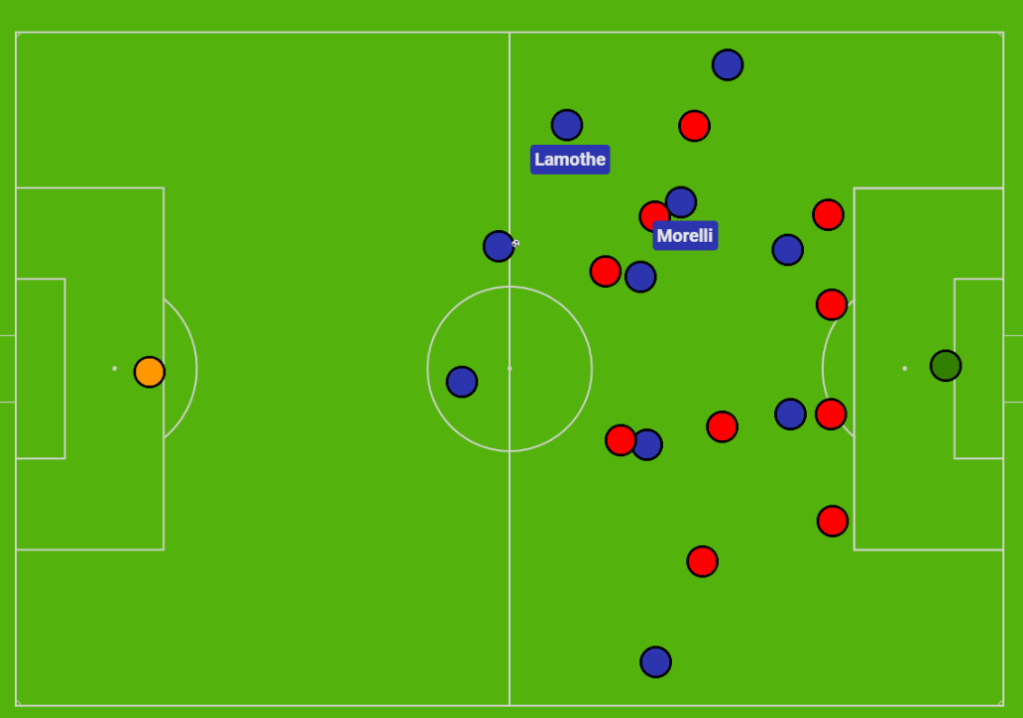
Halifax missed Aidan Daniels’ box to box dribbling and line breaking ability on the day, with the likes of Samuel Salter and Obeng Tabi wasteful during the team’s most positive moments. With that said, Halifax could have taken the game by the scruff of the neck and potentially even come out the victors, had it not been for a mix of poor finishing and remarkable reactions from Nathan Ingham.
From three yards out, the Wanderers worked their way into an excellent position to take the lead, but Samuel Salter crumbled under the pressure.
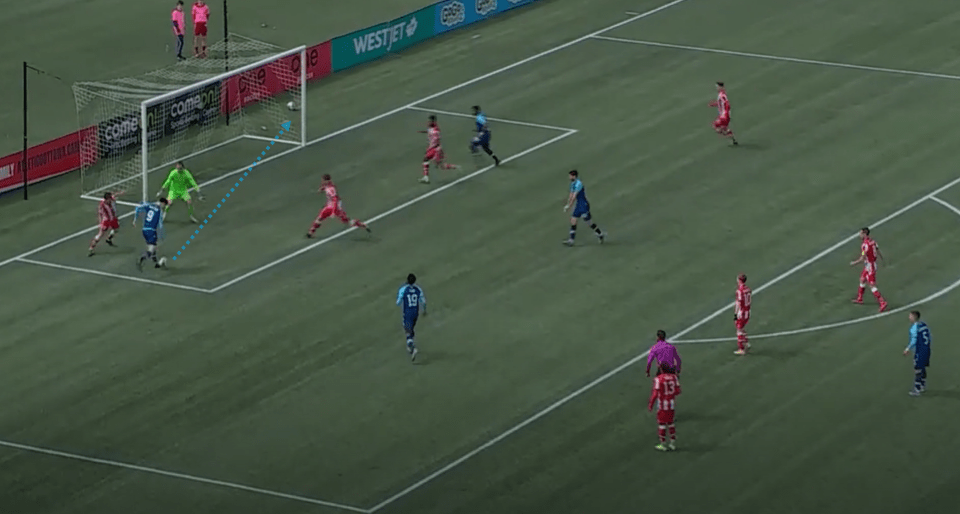
Salter should have wrapped his foot around the ball and aimed for the corner, and the same could be said moments later when the rebound fell right to Morelli, and his clean connection again went straight into Ingham’s legs.
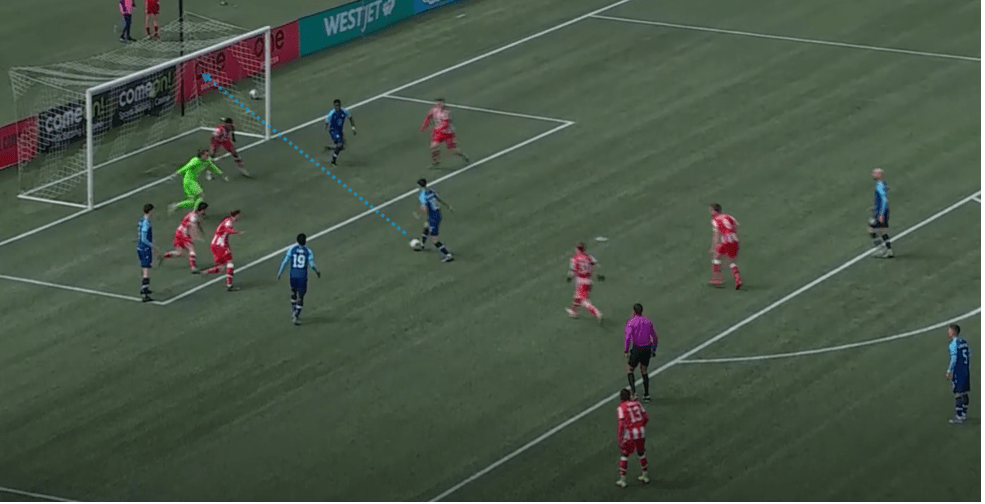
Morelli’s first touch didn’t do enough to open up his hips for the curled strike into the top corner, and Ingham’s strong ‘X’ position killed the power in the shot.
Simultaneously, Halifax’s defensive structures did well to limit Atletico’s attacks. Andre Rampersad had another excellent game anchoring in front of the back four and breaking up the play. Restrepo also had an excellent time defending Ottleti’s crosses into the box, and Morelli’s energetic pressing mitigated Atletico’s ability to play out from the back. But while Halifax won most of the midfield battles, they struggled to contend with Atletico’s wide attacks, and Obeng Tabi had a particularly difficult afternoon 1v1 up against Ballou Tabla. Hart’s wingers also held a higher role out of possession than in the previous match against York, which left an available gap in between fullback and wing for Atletico to exploit. The latter of these concerns is fixable if Halifax desire to take that space away, by being more resolute in a 4-1-4-1 and diligently tracking back. But the former is more difficult to improve upon, especially given the lack of depth as opposed to a team like Atleti, who have adequate cover in just about every position.
On the day, Atletico edged it on both tactics and solidity, and for a little over twenty-four hours, sat top of the table.
forge fc 2-2 cavalry fc

Forge and Cavalry matches typically deliver, and this end to end match perfectly exhibited the attacking intent of both teams. The fiery affair went back and forth for the entire ninety, with a 2-2 score-line failing to reflect just how many goals could have been scored on the day. Providing intrigue to the mix, Forge changed shape away from their 4-3-3 over to a 3-4-1-2 formation, matching Cavalry out of possession in a 3-4-3. The change saw tempo dictator Alexander Achinioti-Jönsson drop into the back-line, where he controlled much of Forge’s attempts to play out from the back. The Cavs on the other hand stuck true to their tried and tested 3-4-3, defending in and out of a 5-2-3 to 5-4-1.
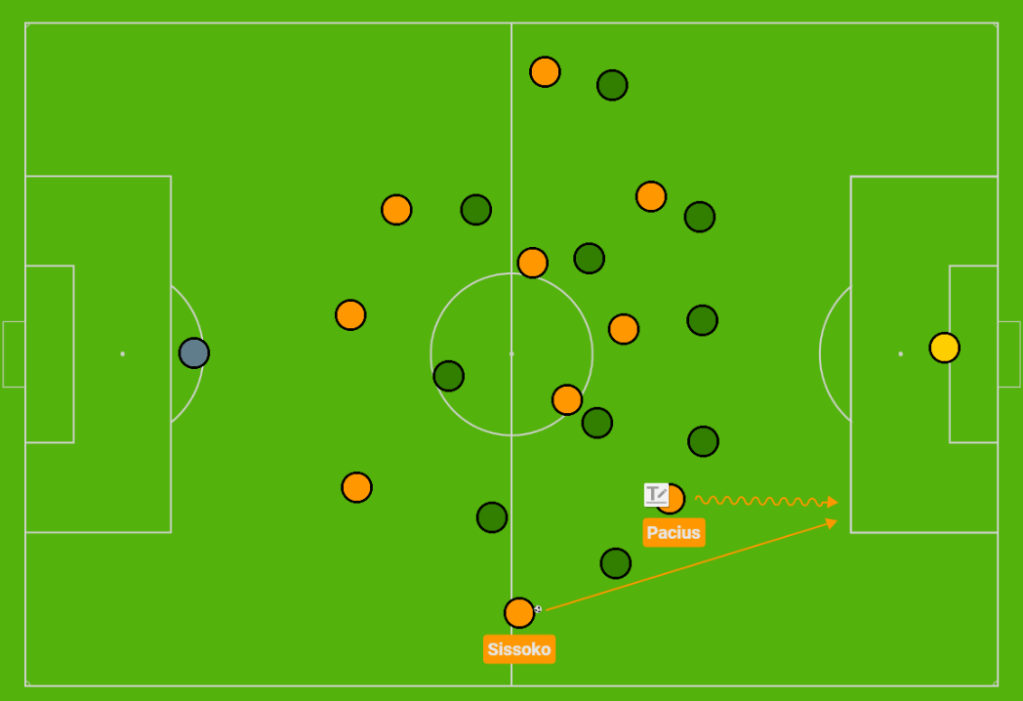
Forge started the match with fire in their belly, with Woobens Pacius instantly working the wide right channels beyond David Norman Jr., and Aboubacar Sissoko seeking passes into the striker’s path. This combination ultimately led to the first goal of the game inside the opening minutes of the match – when Klomp’s poor clearance fell right to Alessandro Hojabprour. The Canadian needed instant redemption after missing a pair of clear-cut chances against Pacific, and instantly found that gratification with his outside of the box strike into the bottom right.
Forge amped up the pressure on Cavalry’s back-line from there, with Terran Campbell making himself an utter nuisance in the left half-spaces. Daan Klomp couldn’t handle the Canadian’s pace, and Karifa Yao had to step out of position several times to cover. It didn’t take long for Wheeldon Jr., to tweak his set-up – swapping Klomp and Yao’s position in order to get the Montreal man permanently touch-tight to Campbell. The threat that the former Pacific man offered throughout the game gave Forge a cutting edge that they lacked in progression phases otherwise, forcing both Yao and Klomp into yellow card challenges. With the boss and bully that is Karifa Yao on a yellow, Forge could have targeted this area of the pitch even more, using Campbell’s excellent hold-up play to break pressure.
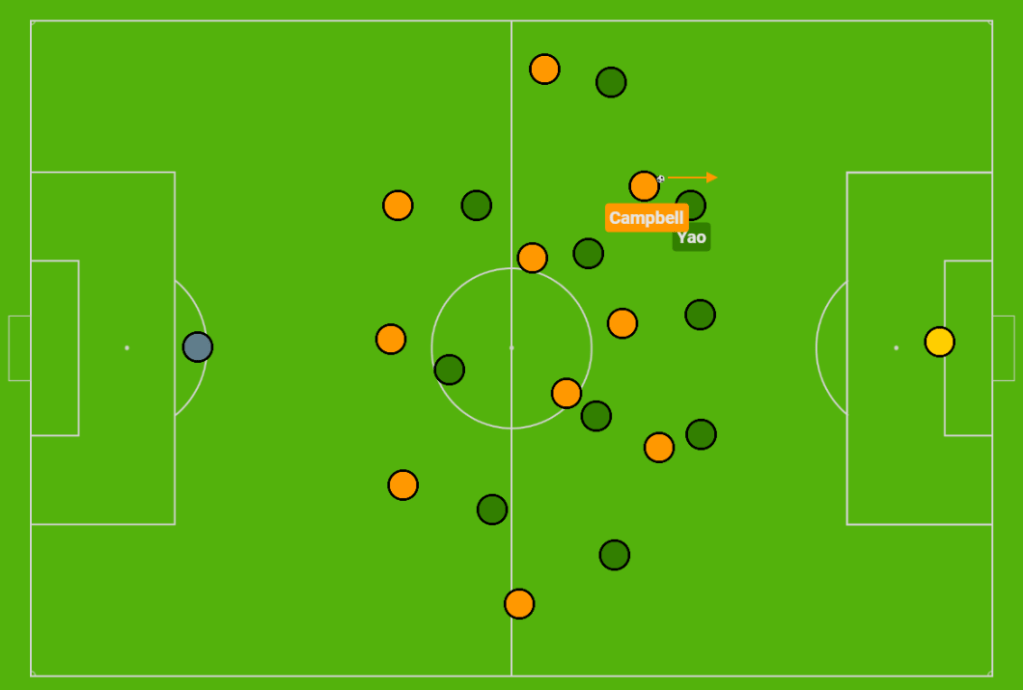
But with Hojabrpour in a deeper role this time due to the positional change of Alexander Achinioti-Jönsson, Forge couldn’t adequately condense central areas, and Cavalry eventually found a route back into the match. Ali Musse and Joe Mason dovetailed brilliantly around one another, with Musse picking up the ball in left-half-spaces ahead of Dominic Samuel and then driving inside. In a back-five, many teams will target the spaces in between wing-back and centre-back, but this is a particularly difficult area of the field to target with passes, particularly when you have a pair of midfielders like Forge’s who are not compacting close enough together. With Musse picking up pockets of space ahead of the back-line, this is one more area where Forge missed Jönsson’s presence higher up the pitch. The Swede was brilliant yet again in winning 100% of his tackles (2/2), and making 4 interceptions for his team, but Forge will look back on Musse’s goal and wonder what they could have prevented by having the 25-year-old in the midfield.
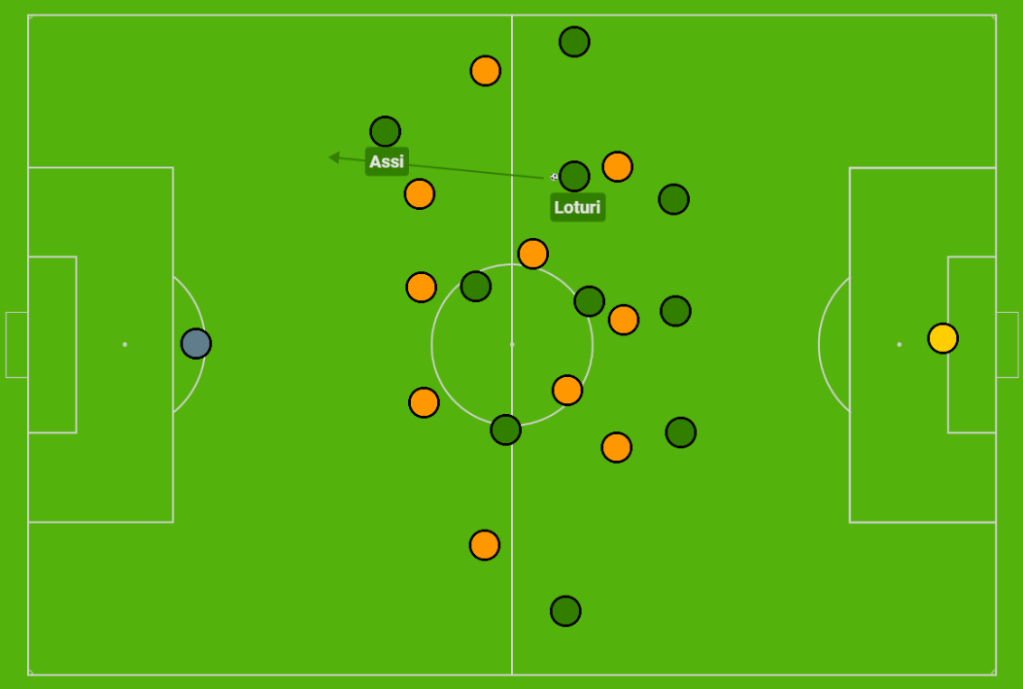
On the other wing, 17-year-old Jean-Aniel Assi was far less impressive, and couldn’t time his runs into the pocket of space between Nanco and Metusala to any degree of perfection. Caught offside on a shocking five occasions, Metusala found it easy to dispossess the winger even when he found his foot on the ball. In fact, the Montreal man made Forge’s 22-year-old centre-back look extraordinary, winning all five of his attempted tackles on the day. If only the normally solid ball-playing centre-half had achieved the same heights in possession, this could have been a different story for Forge. Unfortunately, Assi and Loturi worked together to tighten the avenues for Metusala to carry, and he completed just 1 of the 10 long passes he attempted.
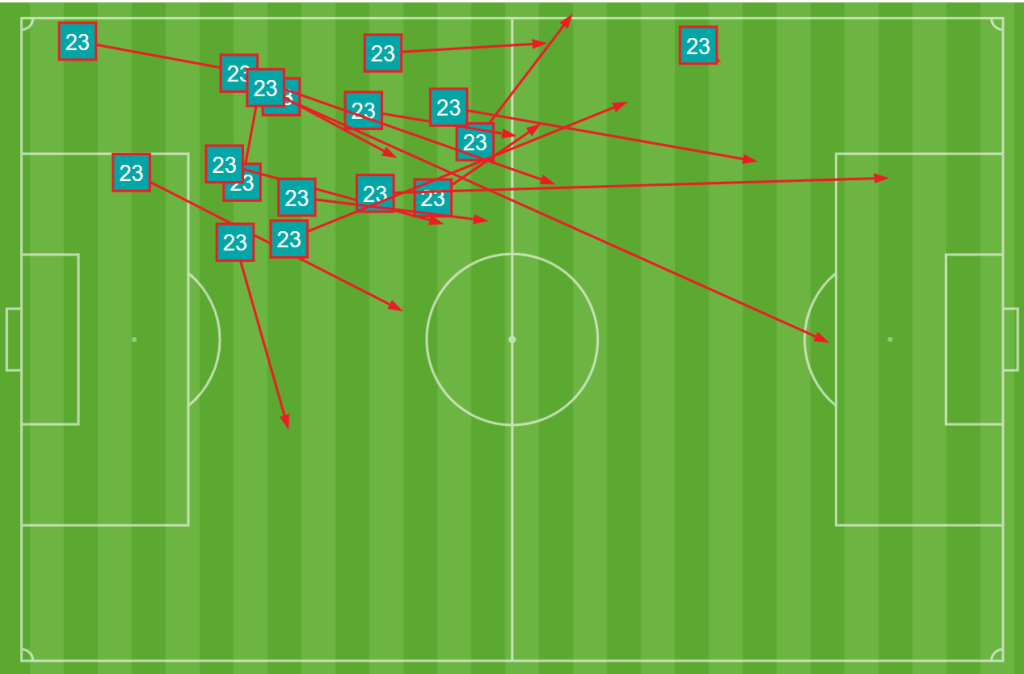
As the match progressed into the latter stages, both managers made attempts to change the match – with Cavalry looking to put the game to bed, and Forge searching for an equalizer. Once again Tommy Wheeldon Jr. lost the substitute battle, with a juxtaposition of fortunes late on. Myer Bevan put a clear-cut chance crossed from Jose Escalante right into the hands of Triston Henry; where moments later Marcus Caldeira switched the ball perfectly over to David Choiniere for the midfielder to rocket the ball into the back of the net. Tristan Borges had a quieter afternoon in search of space ahead of Cavalry’s back-line, with Elliot Simmons and Victor Loturi screening central areas expertly well. But as the Cavs soaked up the pressure and defended in a 5-2-3, eventually Forge found their goal – and what a goal.
PACIFIC 3-2 VALOUR

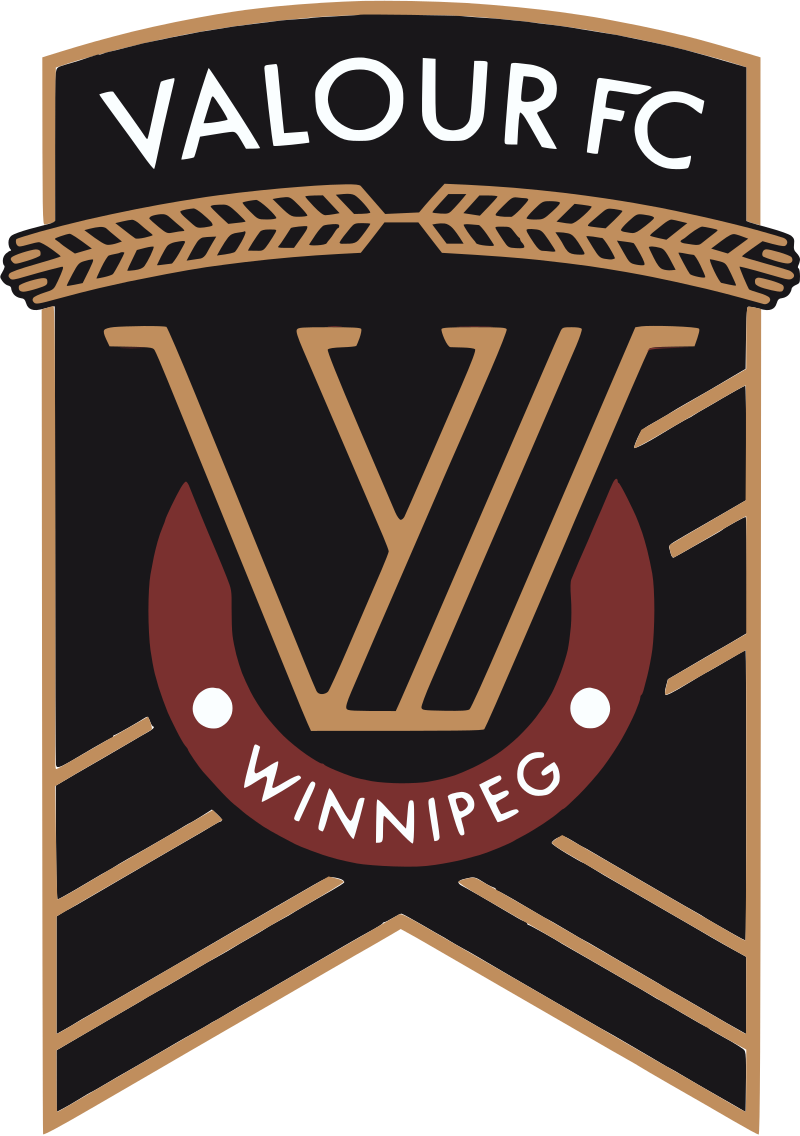
For the second week in a row, Pacific FC put up the performance of the weekend, this time dominating over Valour. The fast-paced attacking combinations of Merriman’s team were in full-flow, utilizing their 4-1-4-1 shape to completely disrupt Valour’s plans from start to finish. The 3-2 score-line massively flatters Dos Santos’ team, who were far and away the worse team all ends up, keeping just 35% of the ball.
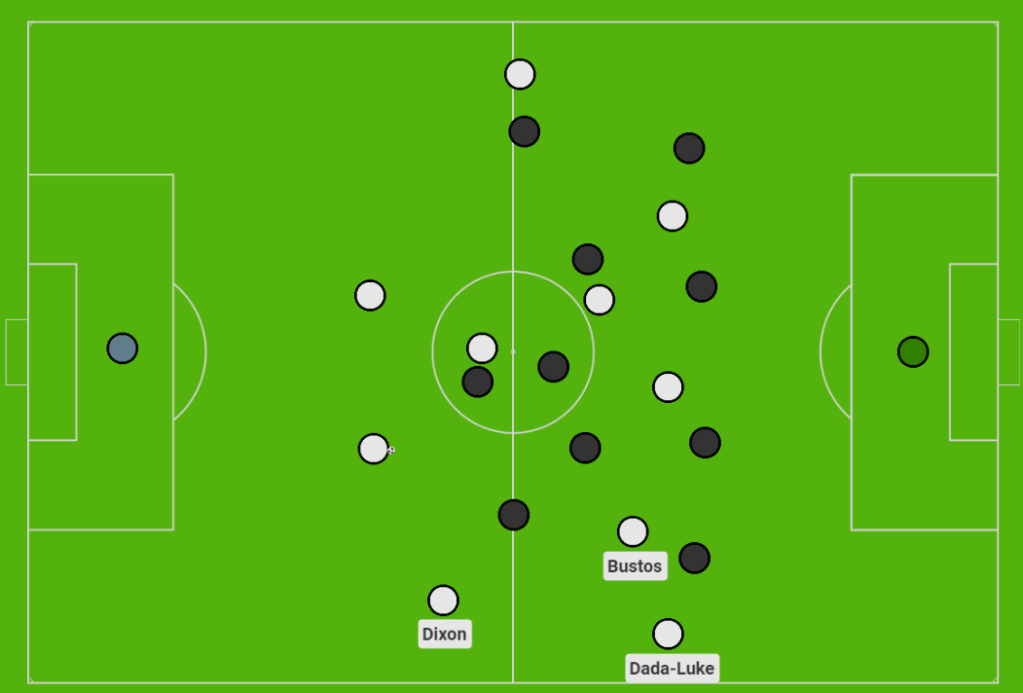
Right from the start, Pacific grabbed the game by the throat, and took complete control. With Baldisimo sitting in front of the back four, Dixon shifting to the right of the defense, and Dada-Luke floating high down the wing, Merriman’s team stayed completely consistent from the first match against Forge. At times, Baldisimo would drop to the left of the defensive line in build-up phases, pushing Nathan Mavila further forward, where Thomas Meilleur-Giguère used his long passing range to target passes down the wide left channel. Josh Heard operated both out wide and in the half-spaces to help Pacific overload their left-hand-side, but the Victoria-based club found far more joy down the right. Marco Bustos floated in and out of wide channels to half-spaces himself, picking up possession and turning under pressure. With Dada-Luke and Bustos combining and creating from wide, Pacific generated 8 big chances in the match, 20 shots, and 3 exceptional goals. Bustos’ constant desire to cut onto his left foot and drift inside also allowed Aparicio to seek space in behind, where the two linked up magnificently well time and time again.
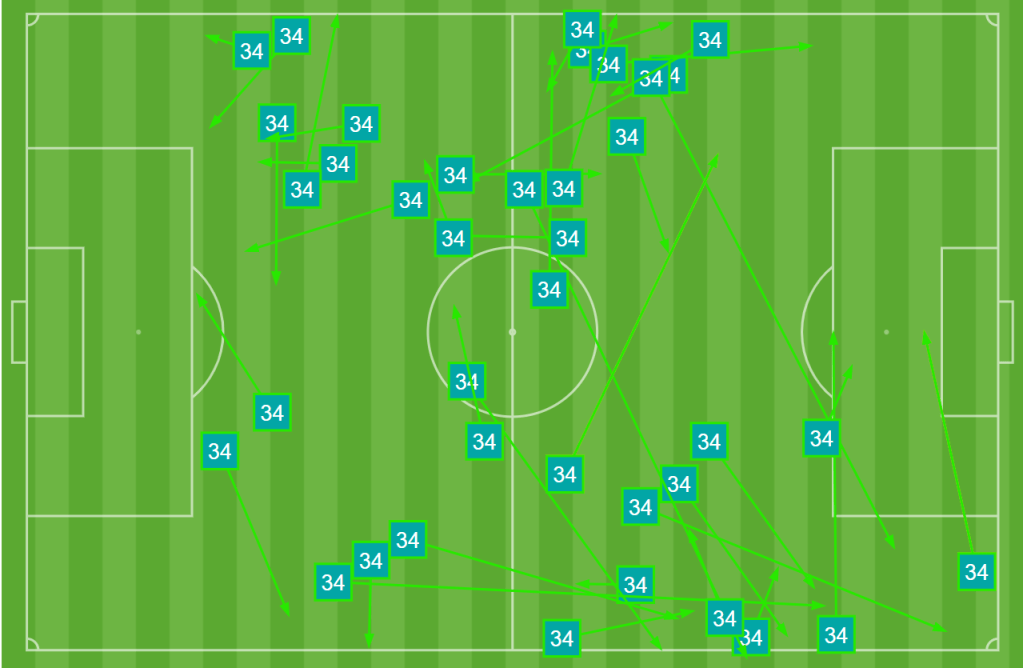
The box to box midfielder performed admirably in every phase of the game, utilizing his long passing range to switch passes over to Pacific’s overloaded right, constantly buzzing in defensive phases, and taking moments to drop in deep, pick up the ball and keep the game ticking. Diaz also dovetailed around Bustos wonderfully, and held his role as the unequivocal target man in the team to perfection. Full of pace and incisive movement everywhere you looked, Valour could not cope with Pacific in transition, let alone when they had enough time to set up their attacking shapes and structure.
Their attempt to do so was made all the more difficult in the 26th minute, when Tony Mikhael karate chopped Nathan Mavila in the face. This was a complete and utter disaster for Philip Dos Santos’ team, who had to replace stand-in right-back Diego Gutierrez just after Aparicio’s 20th minute opener. Andy Baquero won our Player of the Week last time out for his up and down role on the right against FC Edmonton, but went off injured late on in the match, followed shortly thereafter by that all important Tobias Warschewski goal. Had he been fit to start this match from the off, Dos Santos’ problems at right-back could have been completely prevented. But instead, William Akio transitioned into a right-back role for the remainder of the match, and struggled with his defensive tasks – even giving away a penalty that Marco Bustos failed to convert.
The only major positive notes from the match from a Valour perspective were the performances of arguably their two stars – 25-year-old forward Moses Dyer, and penalty kick stopper Jonathan Sirois.
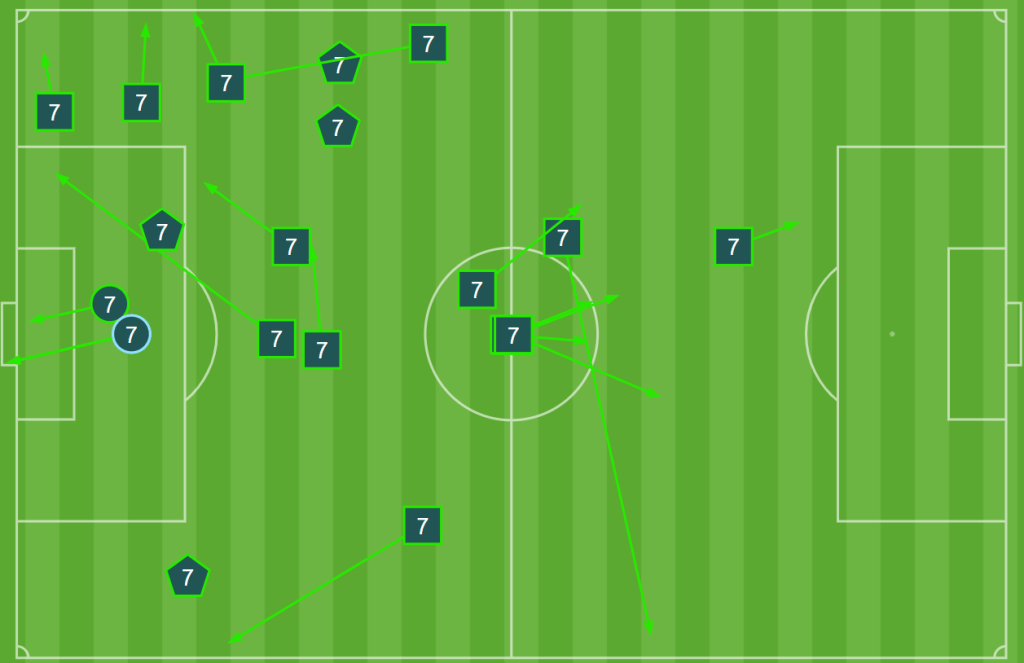
Not only did Sirois make five outstanding saves to keep the Winnipeg-based club in with a chance, he also swept in behind the back-line magnificently. Pacific had control of the match from start to finish, in large part due to their exceptional ability to pick out a long pass on the drop of a dime. While the likes of Federico Pena, Stefan Cebara and William Akio struggled to contend with these long passes into the wide channels (or even into the box), Sirois handled anything slightly overhit with poise, and timed his ventures out from the box well.
Callum Irving did the same, but Matteo Polisi was clumsy in taking Moses Dyer at the end of the match, making the score-line look as though the keeper didn’t have a good day at the office. He conceded more goals than shots saved which isn’t great, but played well in Pacific’s build-up phases and helped them maintain a three at the back structure without Baldisimo in place for the second half. But Dyer was the key to generating chances and causing havoc for Valour from an attacking sense, winning 4 fouls and striking on target with 100% of his shots (2/2). Just about everyone else had a poor performance, and the likes of Federico Pena and Stefan Cebara could never get a grip of their 1v1 duels.
In the end it was a confident and comfortable performance from Pacific, and one that now takes them back ahead of Atletico for first in the table.
MORE TO FOLLOW NEXT WEEK!
This season TheMastermindSite will be covering the CPL from start to finish, with a multitude of Match Analyses, Player Analyses, Player Ratings and in-depth coverage of every single team and their tactics. Be sure to follow both @desmondrhys and @mastermindsite on Twitter to never miss an update. Thanks for reading this week’s tactical review, and be sure to check back in as the matches progress this weekend. See you soon!
YOU MIGHT ALSO ENJOY…
Why the quality of the Canadian Premier League deserves more respect
The Canadian Premier League is not a giant leap away from the MLS, or many of the clubs abroad. Many of the examples of MLS clubs facing off against CPL giants has resulted in losses for the CPL clubs. But the gap has never been that far away. inancially, I recognize the difficulty of choosing…
Game of Numbers #37 – Forge FC’s use of centre-backs in midfield like Manchester City
For the unfamiliar, Forge FC are the Manchester City of the Canadian Premier League. They play a possession-based 4-3-3, stacked with ball-savvy savants, and a culture that embodies winning. The Canadian Premier League’s been around since 2019 now. Forge have won the Playoffs in four of the five seasons, and lost the final in the…
Tommy Wheeldon Jr. – Cavalry FC – Tactical Analysis
Cavalry FC have been the most exciting team to watch in 2023, following up from a wonderful winter of off-season recruitment. The Cavs remain at the top of the table as the 2023 season comes to a close, and after their win against HFX this week, are the first team to claim a spot in…





9 thoughts on “Canadian Premier League Matchday 2 – Tactical Review”